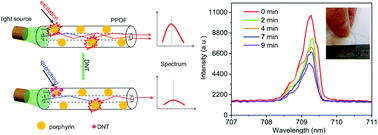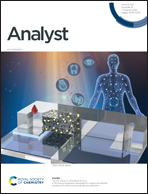Flexible porphyrin doped polymer optical fibers for rapid and remote detection of trace DNT vapor
Abstract
With the rapid growth of anti-terrorist activities worldwide, it becomes an emerging requirement to rapidly and accurately detect hidden explosive threats. However, the safety issue during the explosive material detection, e.g. unexpected explosion, is still an insurmountable challenge. In this study, we design and mass-produce a novel kind of flexible 5,10,15,20-tetrakis(4-aminophenyl)porphyrin doped polymer optical fiber (PPOF) for rapid and accurate detection of trace 2,4-dinitrotoluene (DNT) vapor based on the DNT induced florescence quenching mechanism. The influence of doping concentration, bending, and temperature on the sensing performance is investigated. PPOF shows immunity to bending, enabling it to work in a harsh environment. It is experimentally demonstrated that the limit of detection and response time of the proposed PPOF could reach around 120 ppb and 3 minutes, respectively, which make it much better than other techniques. Owning to its inherent advantages including low-cost, remote-control capability, and compatibility with optical communication networking, PPOF can be constructed the quasi-distributed sensing networking of explosive matters in the future, providing a new strategy for anti-terrorism.



 Please wait while we load your content...
Please wait while we load your content...